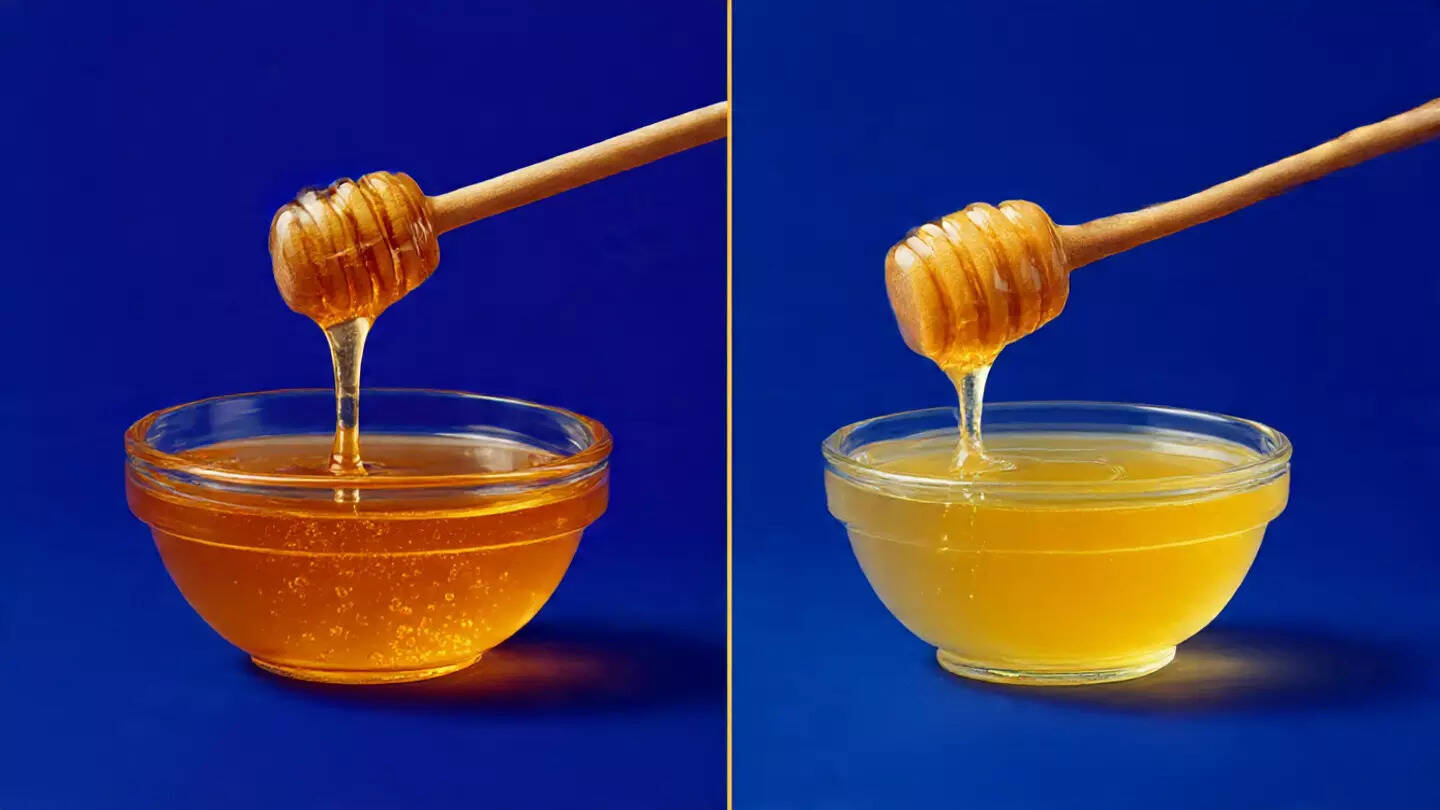How To Spot Fake Honey In Seconds Using Easy Home Methods
Honey has been cherished for centuries as a natural sweetener, a symbol of purity, and a remedy for countless ailments. But in today’s marketplace, not every jar labelled as 'pure honey' truly lives up to its name. Many commercial products are adulterated with sugar syrups, artificial flavours, or other additives to cut costs and boost profits. Knowing how to identify fake honey is essential not only to ensure you’re getting real nutritional value but also to support ethical beekeeping and preserve the integrity of this golden elixir. Here’s a complete guide to help you distinguish genuine honey from its imitations.
1. The Water Test: Fill a glass with water and add a spoonful of honey. Pure honey will settle at the bottom and not dissolve easily, while fake honey will start dissolving quickly due to added sugars or syrups.
2. The Thumb Test: Put a small drop of honey on your thumb. If it spreads or spills, it’s likely adulterated. Pure honey stays firm and sticky on the skin.
3. The Flame Test: Dip a cotton bud in honey and try lighting it with a matchstick. Pure honey will burn steadily because it contains no added moisture, while fake honey often fails to ignite due to high water content. (Caution: perform this test carefully.)
4. The Vinegar Test: Mix a tablespoon of honey with a bit of water and a few drops of vinegar. If the mixture foams, it could indicate the presence of additives or impurities.
5. The Paper Test: Drop a little honey on a blotting paper or tissue. If it leaves a wet mark or gets absorbed quickly, it may be diluted with water or syrup. Pure honey remains thick and doesn’t seep through.
Identifying fake honey requires awareness, observation, and a few simple tests. By understanding how real honey behaves and tastes, you can make informed choices and avoid falling for misleading marketing. Authentic honey is a gift from nature—nutritious, healing, and irreplaceable. The next time you reach for a jar, take a moment to ensure that your golden treat is truly as pure as it looks.

Understanding the Difference Between Pure and Fake Honey
Pure honey is produced naturally by bees using the nectar from flowers. It contains natural enzymes, antioxidants, pollen, and trace minerals that contribute to its rich flavour and health benefits. Fake honey, on the other hand, is often mixed with glucose, corn syrup, or industrial sugar. Some manufacturers even use chemicals to mimic the aroma and consistency of real honey, making it difficult for consumers to tell the difference at first glance. The main goal of identifying fake honey is to look beyond appearance and understand its composition and behaviour under simple tests.Simple Tests to Identify Fake Honey at Home
There are several easy home-based tests you can perform to check the purity of honey without needing laboratory equipment.1. The Water Test: Fill a glass with water and add a spoonful of honey. Pure honey will settle at the bottom and not dissolve easily, while fake honey will start dissolving quickly due to added sugars or syrups.
2. The Thumb Test: Put a small drop of honey on your thumb. If it spreads or spills, it’s likely adulterated. Pure honey stays firm and sticky on the skin.
3. The Flame Test: Dip a cotton bud in honey and try lighting it with a matchstick. Pure honey will burn steadily because it contains no added moisture, while fake honey often fails to ignite due to high water content. (Caution: perform this test carefully.)
4. The Vinegar Test: Mix a tablespoon of honey with a bit of water and a few drops of vinegar. If the mixture foams, it could indicate the presence of additives or impurities.
5. The Paper Test: Drop a little honey on a blotting paper or tissue. If it leaves a wet mark or gets absorbed quickly, it may be diluted with water or syrup. Pure honey remains thick and doesn’t seep through.
Clues in Taste, Texture, and Aroma
Real honey has a rich, aromatic fragrance that varies depending on the flowers visited by bees. Its taste is complex—sometimes slightly tangy or floral—with a lingering aftertaste. Fake honey often tastes excessively sweet or artificial. In terms of texture, pure honey is thicker and more viscous, while fake honey tends to be runnier. Moreover, pure honey crystallises naturally over time, especially in cooler temperatures. Many people wrongly assume crystallisation means spoilage, but it’s actually a sign of authenticity. Fake honey usually remains syrupy for long periods due to added stabilisers.Check the Label and Source
Before buying honey, always read the label carefully. Look for words like '100% pure,' 'raw,' or 'organic,' but don’t rely solely on marketing claims. Reputable brands often mention the floral source, region, and beekeeping methods. Avoid products that list 'glucose,' 'fructose syrup,' or other additives. Purchasing directly from trusted local beekeepers or certified organic stores is a safer way to ensure purity. Traceability matters — when you know where your honey comes from, you can be confident about what’s in your jar.Why Fake Honey is a Problem
Fake honey not only deprives you of the natural health benefits of genuine honey but also harms the environment and ethical beekeeping practices. Adulterated honey lacks the antioxidants, enzymes, and antibacterial properties that make real honey valuable. Moreover, mass production of fake honey disrupts fair trade and discourages sustainable apiculture. By choosing pure honey, you support the preservation of bee populations and contribute to a more responsible food system.Identifying fake honey requires awareness, observation, and a few simple tests. By understanding how real honey behaves and tastes, you can make informed choices and avoid falling for misleading marketing. Authentic honey is a gift from nature—nutritious, healing, and irreplaceable. The next time you reach for a jar, take a moment to ensure that your golden treat is truly as pure as it looks.
Next Story